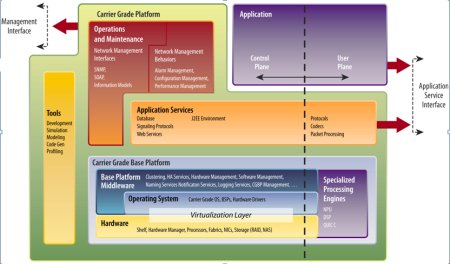Flash-based RDBMS gains fault tolerance
Jul 28, 2008 — by Eric Brown — from the LinuxDevices Archive — 1 viewsEnea has added fault-tolerance to its Linux-compatible lightweight SQL RDBMS, which originally targeted devices like phones and set-top boxes. Now apparently aimed at flash-based server applications, Polyhedra FlashLite has gained support for redundancy, failover, and reconnection, as well as “hot upgrades” and new operating systems.
The new fault-tolerant capability makes Polyhedra FlashLite “ideal for applications requiring five nines or higher availability,” says Enea. The improvements seem aimed at adapting the database to server applications, which increasingly use flash drives to reduce power requirements and maintenance. In addition to new fault tolerant capabilities, Polyhedra FlashLite also gains support for Windows Vista and VxWorks 6.x.
Enea spun off the FlashLite version of Polyhedra in March 2006, adding NOR/NAND Flash data storage capabilities to its lightweight Polyhedra SQL RDBMS (relational database management system). Then, as now, the database was claimed to be “the industry's fastest and most compact flash-based SQL RDBMS.”
The standard Polyhedra version is a transactional, real-time, fault-tolerant, in-memory-capable RDBMS that has targeted telecom and “datacom” applications. Enea ported Polyhedra to Linux in July of 2004, and upgraded it to version 7.0 in May 2007, adding improved multiprocessor performance, better memory exhaustion handling, and strict version control for enhanced field upgradeability.

A simplified architecture diagram for Enea Accelerator 2.0.
Enea can provide “90 to 95 percent” of components in the green box,
says Enea, including Polyhedra (listed as “Database” under “Application Services”).
(Click to enlarge)
Polyhedra can be purchased as part of Enea's Linux-based Enea Accelerator Platform for IP-based services built on carrier-grade infrastructure. Accelerator (see diagram above) is built around Enea's high-availability Element middleware, which is designed for heterogeneous telecom environments that mix Linux with Enea's own OSE and OSEck real-time operating systems (RTOSes).
Polyhedra FlashLite is said to offer the following features:
- Client-server architecture that separates data from applications, protecting memory from accidental modification
- “Active queries” that return ongoing, up-to-date results as live data change, reducing polling and CPU cycles
- Triggers that allow “business logic” to be defined by database structure
- Cache-based design
- Requires under 1MB of RAM for both code and working space
- “ROMable” code allows cache size to be controlled, for RAM usage as low as 200KB
- ACID compliant (atomic, consistent, isolated, and durable)
Stated Dr. Nigel Day, Enea's product manager for Polyhedra, “The addition of fault-tolerant and hot-upgrade facilities makes Polyhedra FlashLite ideal for high-performance, high-availability systems with tight cost, power, and size constraints.”
Availability
The fault-tolerant version of Polyhedra FlashLite is available now, says Enea. All Polyhedra RDBMS products share a common code base, and versions are available for 32- and 64-bit OSes, including Linux, Enea's OSE, VxWorks, Integrity, Windows, and Unix. A single-user developer license is priced at $12,000. More information on Polyhedra FlashLite may be found here.
This article was originally published on LinuxDevices.com and has been donated to the open source community by QuinStreet Inc. Please visit LinuxToday.com for up-to-date news and articles about Linux and open source.